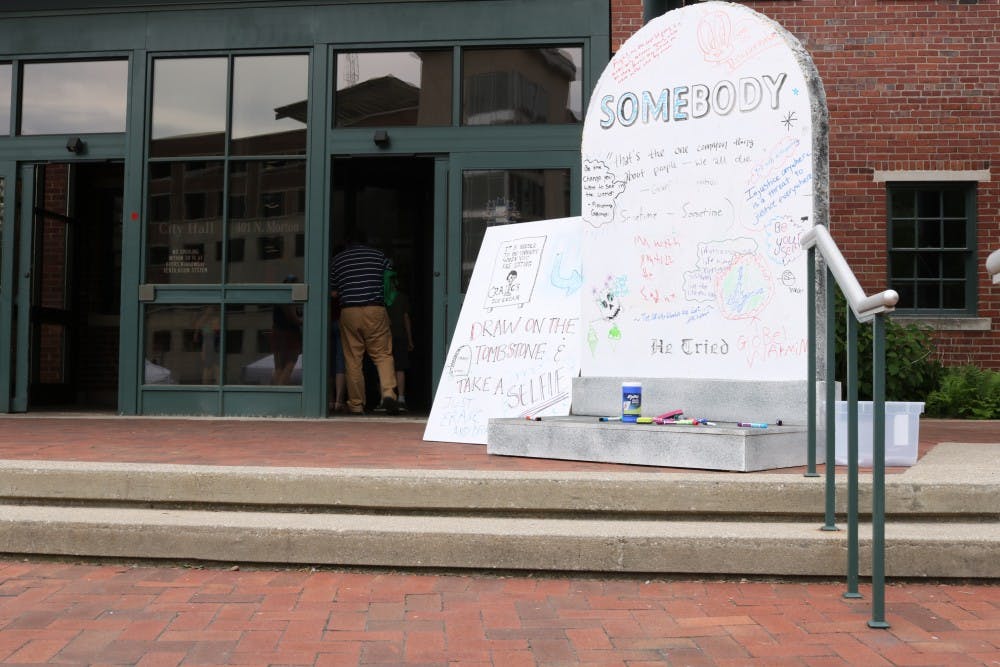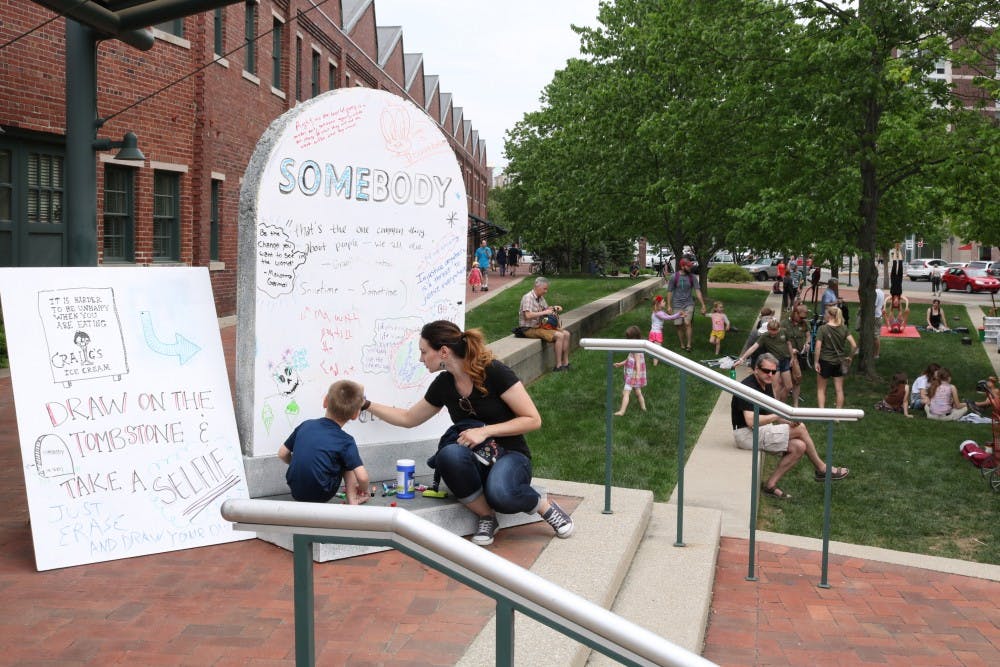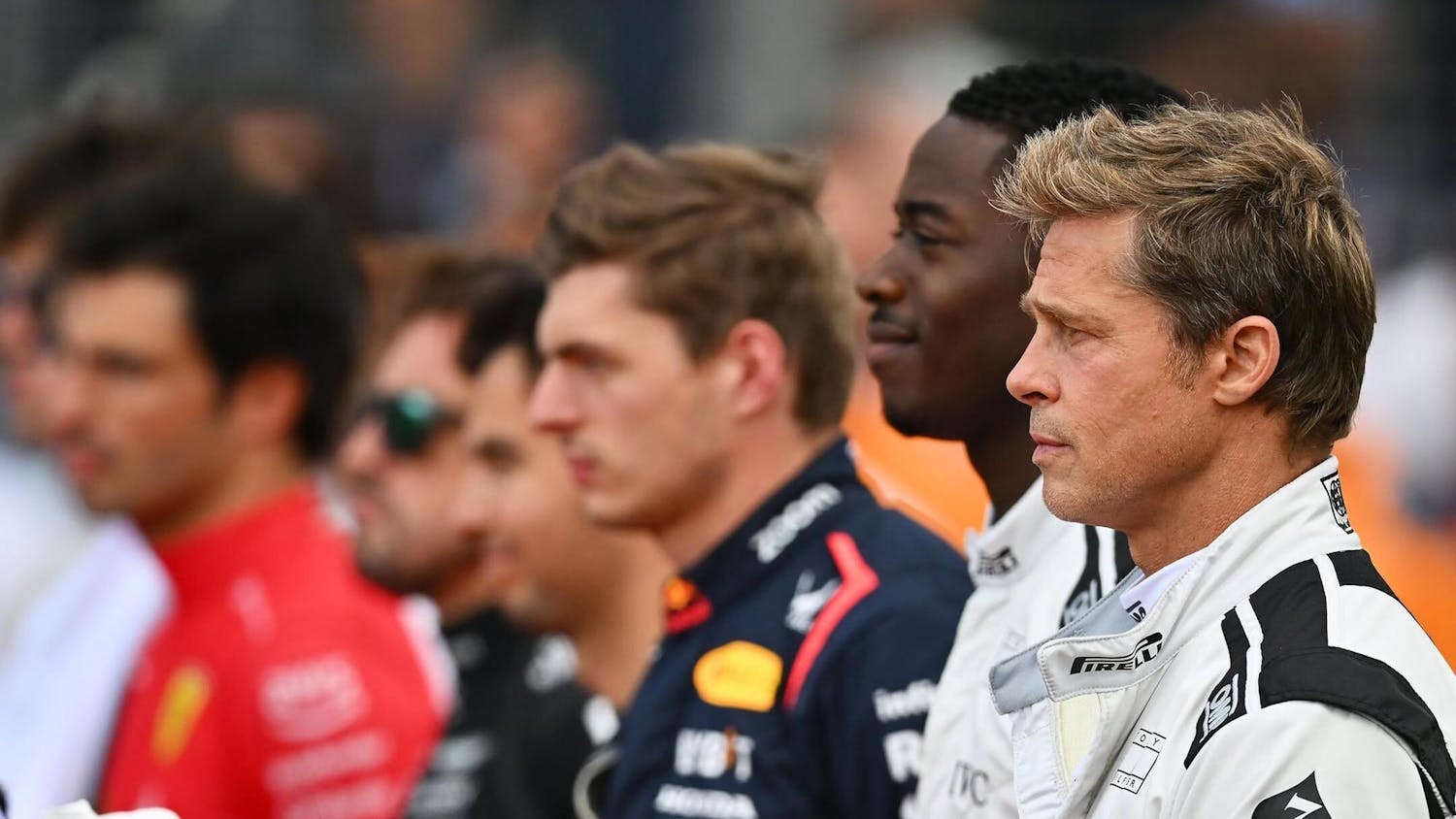A gianttombstone sat outside City Hall on Saturday morning. The name inscribed on it was “Somebody.” Below it was the epitaph: “He Tried.”

A series of booths, panels and lectures highlighted the wacky, turbulent life of author Kurt Vonnegut on the last day of the three-day literary festival "Granfalloon: A Kurt Vonnegut Convergence."
The “Cook Like Vonnegut” booth featured samples of food inspired by the author. The creations included “Salad of Titan,” “Schlachthof Schnitzel” and “Von-nougat’s Balls.”
“Write Like Vonnegut” let visitors take home notebooks after writing a sentence in the style of Vonnegut. Tips to write like the author included “say you’re the narrator” and “joke about death.”
The Kurt Vonnegut Memorial Library booth sold merchandise, including a signed screen print of the bomb in “Goodbye Blue Monday."
Other booths included “Draw Like Vonnegut” and a board game Vonnegut created in 1956, titled “General Headquarters.” Vonnegut created the chess-like game during a time of financial struggles.
“We’ve made the first ever production of the board game,” Arts & Humanities Council intern Lucy Battersby said. “That’s mostly because it’s horribly complicated.”
The panels at the Lilly Library and City Hall took different perspectives on Vonnegut, with titles such as “Vonnegut the Scientist.”
Aaron Jaffe, English professor at Florida State University, spoke about Vonnegut’s lecture on the shape of stories, which arose from Vonnegut's failed MFA thesis at the University of Chicago.
Jaffe said half of the thesis is a reproduction of a short story by writer D.H. Lawrence.
“Vonnegut said his graphs don’t grasp one one-thousandth of the master strokes of D.H. Lawrence,” Jaffe said.
During the panel “Vonnegut the American,” Assistant Librarian Isabel Planton showed drafts of “Slaughterhouse-Five” from the Lilly Library’s Vonnegut collection. She also showed two of his papers, “I Shall Not Want” and “Psychology of Hunger,” both of which contain elements of his life as a prisoner of war following the firebombing of Dresden, Germany.

She said Vonnegut would pretend to be a waiter for the other prisoners of war and take their order. The prisoners obsessed over a particular food fantasy: six pancakes with raisins in the batter, with eggs between each two pancakes, a quarter pound of butter on top, all drenched in honey.
Planton also said Vonnegut had no interest in eating this once he returned to the United States.
Lawyer Eric R. Waldkoetter spoke on the 18 months after Vonnegut first joined the army. During that time, his mother died, he went to war, he fought at the Battle of the Bulge, he was taken as a prisoner of war by Germans and he survived the Dresden firebombing.
During this time, Vonnegut met soldier Joe Crone. Waldkoetter said Crone was awkward, innocent and confused, and would become the inspiration for the protagonist in “Slaughterhouse-Five."
When Vonnegut wrote about his experience of World War II in “Slaughterhouse-Five,” the topics of firebombing, war and death were familiar to his 1960’s-era audience.
“‘Slaughterhouse-Five’ was as pertinent to Vietnam as it was to World War II,” Waldkoetter said.
Other panels, such as “Vonnegut the Writer,” offered different views on the author.
Tassie Gniady, manager of IU Cyberstructure for Digital Humanities, analyzed Vonnegut and Ray Bradbury’s works with text analysis tools. She presented a graph that showed the frequency of the words “war,” “soldier” and “nation” in their novels.
“I was really interested in how they consider the individual against the nation,” Gniady said.
The term “war” makes up 4 percent of the words in some of Vonnegut's books, such as “Mother Night” and “Slaughterhouse-Five.”
On average, the word "the" makes up 7 percent of the words in most novels, Gniady said.
“War dominates what he’s doing,” Gniady said. “Vonnegut can’t ever get away from himself and his experiences.”
In a previous version of this article, Tassie Gniady was referred to her as an archivist and the software she works with as library archiving software. The IDS regrets this error.



